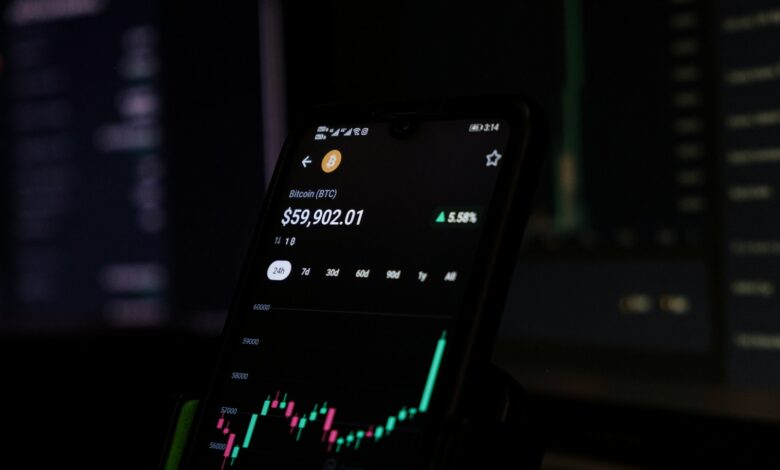Cryptocurrency yield curves – interest rate structures

Analyzing the term to maturity is critical when assessing returns from crypto-based lending platforms. Short-term agreements often offer lower compensation compared to longer commitments, reflecting liquidity preferences and risk premiums embedded in the market. Monitoring how yields evolve across different tenors reveals investor sentiment about future market conditions and borrowing demand.
Structures of compensation in decentralized finance exhibit distinctive shapes influenced by protocol incentives and supply-demand imbalances. An upward sloping curve suggests expectations of rising compensation for extended lock-up periods, while a flat or inverted profile may indicate uncertainty or tightening capital availability. These patterns assist sophisticated participants in optimizing portfolio allocation between spot holdings and fixed-duration lending positions.
Rate fluctuations linked to maturity intervals provide actionable insights into creditworthiness perceptions within blockchain ecosystems. Platforms with transparent collateralization mechanisms tend to display more stable term spreads, whereas emerging protocols might present volatile profiles requiring careful scrutiny. Incorporating these observations into strategic decision-making enhances yield optimization while managing exposure to systemic events impacting digital asset financing.
Cryptocurrency yield curves: interest rate structures [Digital Finance digital-finance]
Optimal allocation of lending capital within blockchain-based financial instruments requires a nuanced understanding of term-specific returns and maturity profiles. Analysis of the temporal distribution of yields reveals that shorter commitments tend to offer lower compensation compared to extended tenors, reflecting liquidity preferences and risk premiums inherent in decentralized finance protocols.
Examining the configuration of borrowing costs across various maturities provides insight into market sentiment and anticipated protocol performance. Term-dependent compensation metrics often manifest as ascending or inverted patterns, influenced by factors such as token volatility, platform creditworthiness, and macroeconomic conditions impacting digital asset markets.
Structures governing lending returns across maturities
The segmentation of lending durations–ranging from overnight engagements to multi-month or even yearly arrangements–forms the backbone of decentralized borrowing ecosystems. Platforms implementing automated market makers or fixed-term contracts present distinct compensation frameworks, where longer lock-ups generally command higher remuneration due to opportunity cost and exposure risks.
- Short-term agreements: Typically exhibit lower payouts but enhanced flexibility; favored for tactical liquidity management.
- Medium-term commitments: Balance between yield enhancement and moderate duration risk; popular among active yield seekers.
- Long-term allocations: Offer elevated returns compensating for reduced liquidity and greater uncertainty over extended horizons.
Empirical data from leading decentralized platforms demonstrate that average monthly return increments for longer maturities can range from 20% to 50% above base short-term levels, contingent on network activity and staking demand. This gradient underscores the importance of assessing time-framed incentives when structuring portfolios aiming at maximizing income streams from digital assets.
A comparative evaluation between fixed-rate offerings and variable compensation schemes highlights divergent strategic considerations. Fixed remuneration facilitates predictable cash flow modeling but may underperform amid rising demand for collateralized lending. Conversely, floating returns linked to protocol utilization rates introduce volatility yet enable participation in upside market dynamics.
The interplay between loan duration and reward levels reflects broader economic signals within distributed ledger financing. Notably, shifts in regulatory environments and network upgrades can induce adjustments in these temporal compensation gradients, necessitating continuous monitoring by investors seeking optimized revenue generation strategies through diversified term exposure.
The forecasted trajectory suggests an increasing stratification of return profiles aligned with innovative financial products tailored for bespoke maturity intervals. Embracing analytical rigor in evaluating these patterns will empower stakeholders to capitalize on differentiated opportunities presented by evolving decentralized funding methodologies while mitigating duration-related uncertainties effectively.
Interpreting Crypto Yield Curve Shapes
The shape of a lending term curve provides critical insights into market expectations for future returns and liquidity preferences within decentralized finance platforms. A normal ascending structure typically indicates higher compensation for locking assets over longer durations, reflecting anticipated growth or inflationary pressures affecting token value. For instance, on platforms like Aave or Compound, longer maturities offer elevated compensation levels to incentivize lenders to commit funds for extended periods.
In contrast, an inverted slope signals unusual market conditions where short-term returns surpass long-term commitments. This phenomenon may suggest concerns about near-term volatility or regulatory uncertainties impacting borrowing demand and asset stability. Data from recent lending pools in Ethereum-based protocols showed inversion during periods of heightened macroeconomic tension, prompting cautious positioning among liquidity providers.
Term Length Impact on Lending Returns
The distribution of returns across various maturity horizons reflects both risk appetite and protocol-specific incentives. Short-dated loans often exhibit lower yields due to enhanced liquidity and reduced exposure to market fluctuations. Conversely, extended terms embed premium factors accounting for potential price swings and platform operational risks. For example, Terra’s Anchor Protocol demonstrated this dynamic by offering progressively increased compensation rates for deposits locked beyond six months compared to overnight lending options.
Moreover, fluctuating governance parameters can influence the curve shape by adjusting reward mechanisms tied to network participation or staking activities. Adaptive algorithms recalibrate expected compensation as supply-demand metrics evolve, thereby altering the slope and curvature of lending schedules dynamically.
- Steepening curves imply growing confidence in long-term asset appreciation or rising funding costs.
- Flattening curves indicate convergence in short- and long-term incentives, often preceding market stabilization phases.
- Humped shapes reflect transient imbalances where medium-term commitments yield comparatively higher benefits than both ends of the spectrum.
A comparative case study between Solana-based lending protocols revealed that humped formations aligned with specific upgrade rollouts causing temporary disruptions in liquidity flow and borrower demand patterns. This underlines the necessity of monitoring operational events alongside quantitative term-dependent returns analysis.
An informed interpretation requires integrating macroeconomic data with on-chain analytics highlighting borrowing trends per maturity bracket. Regulatory announcements affecting collateral acceptability or liquidation thresholds can abruptly reshape incentive gradients across term lengths, demanding continuous reassessment of positional strategies among lenders and borrowers alike.
The interplay between anticipated digital asset volatility and protocol governance adaptations fosters complex return landscapes across various term commitments. Strategic allocation decisions hinge on accurately reading these temporal compensation patterns to optimize capital deployment while mitigating exposure to systemic shocks inherent in decentralized finance ecosystems.
Impact of staking duration on yields
Lock-up periods significantly influence returns in decentralized finance protocols, with longer commitments generally offering enhanced compensation to offset reduced liquidity. Analysis of fixed-term staking agreements reveals that extending the holding interval from 30 to 90 days can increase annualized returns by approximately 15-25%, depending on network demand and tokenomics. This behavior aligns with traditional financial instruments where extended maturities typically command higher premiums due to opportunity costs and risk exposure over time.
Examining the shape of reward distribution across various lock-up lengths uncovers a nonlinear growth pattern, often represented as upward sloping return profiles. For instance, some DeFi platforms utilize tiered incentive models where yields escalate disproportionately after reaching predefined term thresholds–such as 180 or 365 days–to encourage long-term capital commitment. These stepped increments create segmented reward functions that differ from smooth curves observed in conventional lending markets, reflecting underlying protocol governance and liquidity dynamics.
Comparative case studies between staking and lending markets demonstrate divergent risk-return calibrations based on duration sensitivity. Lending pools with flexible withdrawal options tend to offer lower compensation rates relative to locked staking because they prioritize capital accessibility over maximized gains. Conversely, protocols employing rigid vesting schedules incorporate higher reward multipliers to balance illiquidity risks borne by participants. This trade-off highlights the importance of evaluating temporal exposure alongside yield enhancement when constructing asset allocation strategies within blockchain ecosystems.
Regulatory frameworks and macroeconomic factors also modulate incentive structures tied to commitment lengths. Recent shifts in monetary policies have influenced base network interest proxies, prompting adaptive adjustments in reward schedules for extended-term deposits. Moreover, emerging governance proposals increasingly integrate dynamic adjustment mechanisms that recalibrate returns based on real-time supply-demand metrics and market volatility indexes, ensuring sustainable incentives for varied staking durations while maintaining systemic resilience.
Comparing Fixed vs Variable Rates in Digital Asset Lending
Choosing between predetermined and fluctuating compensation levels for digital asset deposits depends heavily on the investor’s risk tolerance and market outlook. Fixed commitments guarantee a stable return over the agreed term, insulating holders from volatility in lending platforms or decentralized finance protocols. Conversely, variable compensation adapts to market shifts, often reflecting supply-demand dynamics and protocol incentives, which can lead to enhanced earnings during bullish cycles but also exposes participants to declines when conditions soften.
Analysis of historical patterns reveals that fixed-term agreements typically offer lower average returns but provide predictability across various maturities. For instance, locking tokens into a 12-month contract might yield consistent quarterly payouts at an annualized figure of 6%, unaffected by short-term fluctuations. In contrast, dynamic reward mechanisms tied to liquidity pool performance have exhibited substantial swings–from as low as 3% during downturns to peaks exceeding 10% amid heightened network activity–highlighting their sensitivity to market sentiment.
Structural Differences Impacting Earnings Profiles
Term-based financial frameworks with constant compensations create upward-sloping remuneration profiles aligned with maturity length; longer commitments generally command higher annualized gains due to opportunity costs and illiquidity premiums. This rigidity benefits conservative stakeholders prioritizing capital preservation and forecastable cash flows. On the other hand, adjustable schemes align incentives with real-time ecosystem health and borrowing demand, offering potential outperformance but requiring active monitoring and risk management strategies to mitigate abrupt yield contractions.
- Fixed Compensation: Stability in projected returns irrespective of external conditions;
- Variable Remuneration: Flexibility reacting to protocol usage rates and macroeconomic factors;
- Maturity Considerations: Longer durations typically enhance fixed yields but introduce lock-in risks;
- Market Sensitivity: Dynamic payouts fluctuate with supply-demand imbalances and platform governance decisions.
The decision matrix becomes more complex when incorporating regulatory developments affecting decentralized lending markets. Recent policy clarifications have prompted several platforms to alter their payout methodologies–shifting from variable incentives toward fixed arrangements to ensure compliance and investor confidence. Such adjustments influence the overall cost of capital within ecosystems, potentially compressing variable compensations while bolstering fixed alternatives’ appeal for institutional-grade participants.
A practical case study involves comparing a fixed commitment on a leading lending protocol versus participation in its variable incentive pools during Q1-Q4 2023. The former delivered an unwavering payout near 6%, while the latter experienced monthly variances ranging from +8% during bull runs to sub-4% amid retracements, underscoring the tradeoff between security and potential gain inherent in these two models.
Cognizance of these dynamics enables strategic allocation across different time horizons and compensation frameworks, aligning portfolio construction with individual investment mandates, expected inflationary pressures on token economies, and evolving borrowing demands within blockchain-based financing sectors.
Conclusion: Navigating Risks Impacting Crypto Lending Returns
Mitigating risks tied to term lengths and loan durations is paramount for optimizing returns in decentralized financing environments. The sensitivity of yield structures to market volatility, counterparty defaults, and protocol governance shifts demands rigorous scrutiny of maturity profiles and underlying asset stability before committing capital.
Fluctuations in borrowing premiums directly influence the slope and shape of compensation curves, underscoring the need for dynamic models that incorporate liquidity constraints and macroeconomic indicators. For example, abrupt changes in staking incentives or liquidation penalties can distort expected compensation across various time horizons, challenging traditional assumptions about temporal risk premia.
Key Technical Insights and Future Directions
- Term Dependency: Longer lock-up periods often command higher yields but expose lenders to amplified systemic risks such as protocol upgrades or regulatory clampdowns, which can impair capital recovery upon maturity.
- Lending Protocol Vulnerabilities: Smart contract exploits and oracle failures remain significant threat vectors that can abruptly alter return profiles irrespective of nominal rates fixed at origination.
- Maturity Mismatch Risks: Disparities between asset liquidity timelines and funding horizons may induce forced deleveraging or margin calls, reshaping compensation trajectories unexpectedly.
- Structural Shifts in Compensation Dynamics: Evolving consensus mechanisms and monetary policy analogues within blockchain ecosystems will likely recalibrate incentive paradigms, affecting how yields correlate with tenure.
A prudent approach involves continuous monitoring of real-time metrics such as utilization ratios, collateralization levels, and market depth to anticipate inflection points in lending premiums. Incorporating scenario analyses around macro-financial shocks and technological disruptions can refine forecasting accuracy for return expectations across maturities.
The intersection of regulatory frameworks with decentralized lending architectures will further influence the evolution of remuneration gradients. Adaptive strategies leveraging multi-protocol diversification and adjustable commitment periods promise enhanced resilience against structural uncertainties. As innovations like layer-two scaling solutions mature, they may introduce new variables altering effective cost of capital over different time frames.
Ultimately, mastering the complex interplay between time horizons, risk exposures, and compensation mechanisms remains essential for sophisticated participants aiming to harness sustainable gains from blockchain-based credit markets.






